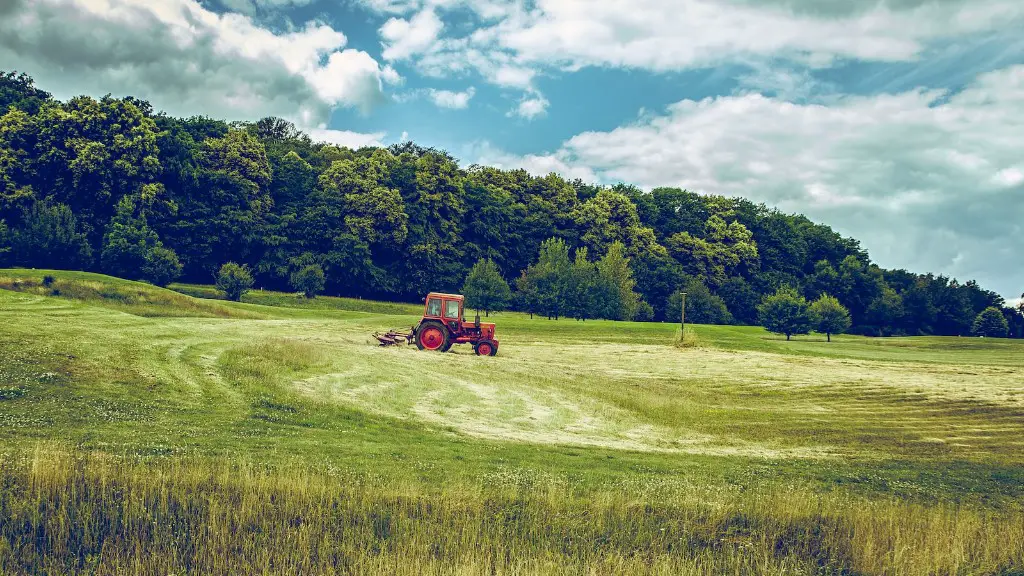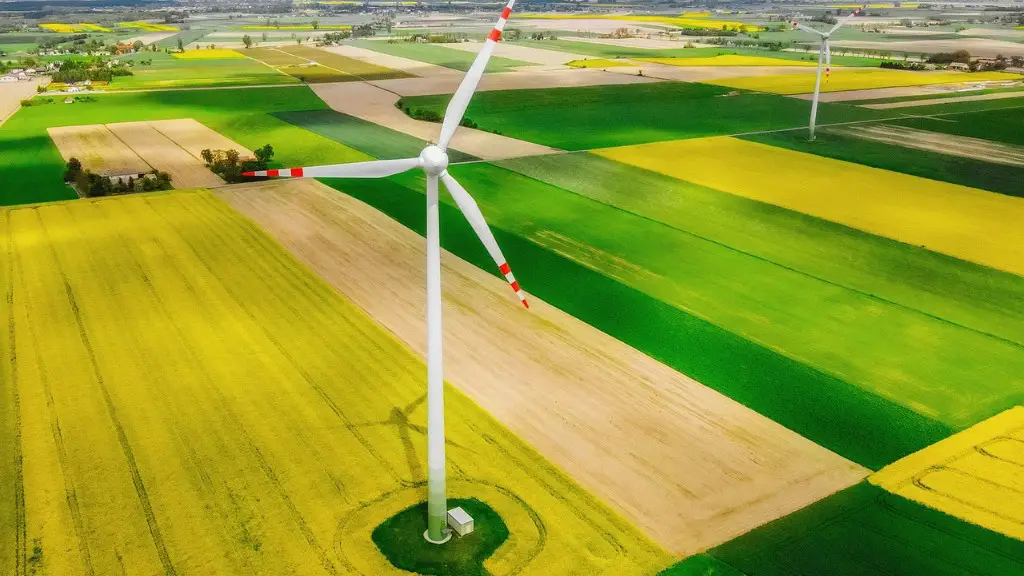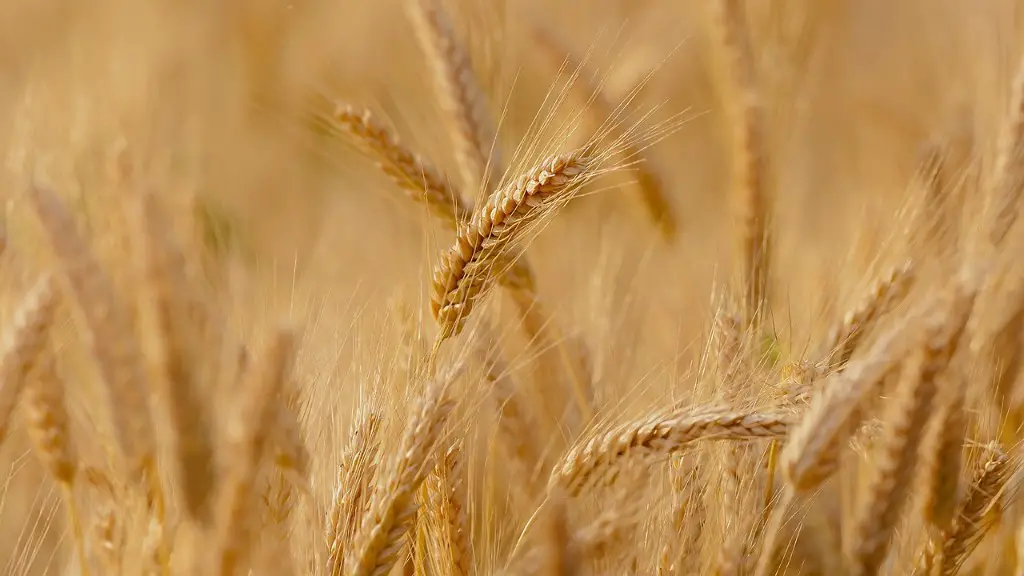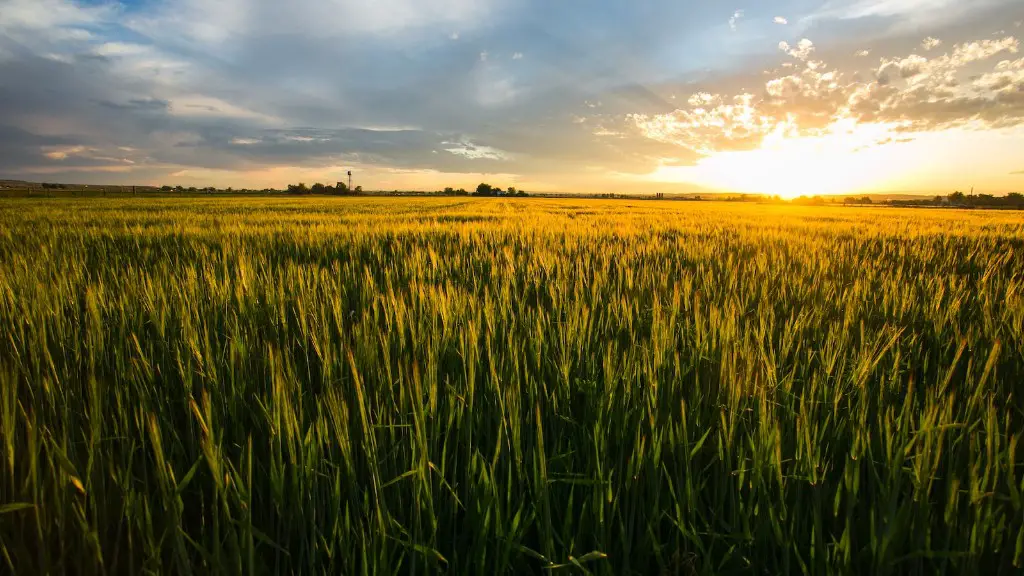Precision agriculture, also known as site-specific agriculture, is an advanced farming system that uses modern information and communication technologies to anticipate and precisely measure the resource requirements of each area of a farm to optimize crop production. This technology provides several benefits to farmers, including increased efficiency, improved yields, and reduced environmental impacts. Precision agriculture also plays a role in reducing costs and increasing profits for farmers.
In precision agriculture, sophisticated techniques are used to determine the exact amount of water, fertilizers, and other resources needed for optimal crop production. By adopting these techniques, farmers can ensure that each area on the farm is receiving the ideal amount of resources, reducing their environmental impacts and cutting costs. Additionally, they can tailor the amount of resources to particular parts of the field, allowing them to maximize yield in areas with higher potential.
Having precise information about each area of the farm also enables farmers to identify and address problems quickly, reducing the risk of crop loss and increasing efficiency. Through the use of sensors, drones, and other technologies, farmers can accurately measure and monitor farm conditions, allowing them to make better decisions and optimize production. Furthermore, precision agriculture systems provide detailed data on soil health, crop yields, climate conditions, and potential areas of improvement, which can be used to inform decisions about crop management and soil maintenance.
Another benefit of precision agriculture is that it enables farmers to adapt their farming practices to changing environmental conditions. As climate patterns vary, the amount of water, fertilizer, and other resources needed for optimal crop production will also change. By leveraging information from precision agriculture systems, farmers can adjust their practices in response to changing weather patterns, reducing losses due to drought or flooding.
Precision agriculture also helps farmers to adopt more sustainable practices by locating areas that are potentially more susceptible to soil erosion and water pollution. By pinpointing areas that are vulnerable to erosion or leaching, farmers can avoid those areas and reduce their impacts on the environment. Additionally, the data gathered through these systems can help farmers to manage their resources more efficiently and enable them to determine which areas of the farm require the most attention.
History of Precision Agriculture
The concept of precision agriculture dates back to the 1920s, when European farmers began using aerial photography to map their land. This technology allowed farmers to accurately map the boundaries of their fields and analyze crop patterns. In the mid-1970s, US researchers began exploring the potential of computer technology to support the collection and analysis of field data. This research culminated in the development of the first precision agriculture system in the 1980s.
In the ensuing decades, precision agriculture technology has evolved to encompass a wide range of applications. Today, systems are available that collect, store, and analyze data from a variety of sources, including soil, weather, and aerial imagery. The development of satellite-based positioning systems, such as GPS, has also enabled developers to create systems that can track the exact location of each field, allowing farmers to better identify areas that are in need of attention.
Modern precision agriculture systems are now capable of providing detailed insights into crop yields, soil health, and more. By leveraging these systems, farmers can precisely measure resource inputs and tailor their farming practices to the specific needs of each area of their farm, leading to increased efficiency and improved yield.
Benefits of Precision Agriculture
Precision agriculture provides numerous benefits to both farmers and the environment. By leveraging technology to accurately measure and monitor each area of the farm, farmers can ensure that the right amount of resources is being allocated to each field, which can lead to improved yields and reduced environmental impacts. Additionally, by identifying areas in need of improvement, farmers can quickly respond and address problems, reducing the risk of crop loss.
Moreover, precision agriculture helps farmers to adapt to changing environmental conditions through the use of predictive analytics. By being able to anticipate potential weather patterns, farmers can modify their practices appropriately, reducing losses due to drought or flooding. By providing detailed data on crop yields, soil health, and more, precision agriculture also helps farmers to make better decisions and increase their profits.
Furthermore, precision agriculture systems enable farmers to adopt more sustainable practices by locating areas that are potentially more susceptible to soil erosion and water pollution. By avoiding those areas, farmers can minimize their environmental impacts and reduce their costs. Finally, precision agriculture systems can help farmers to manage their resources more efficiently, enabling them to reduce their costs and maximize their profits.
Technology Used in Precision Agriculture
A variety of technologies are used in precision agriculture, including drones, GPS, remote sensing devices, sensors, and computer software. Drones allow farmers to quickly survey large areas of land and collect accurate data, while GPS is used to track the exact location of each field. Remote sensing technologies, such as satellites and aerial photography, can be used to detect changes in soil type and moisture content, as well as crop stress and potential areas of erosion. Sensors can also be used to measure a variety of environmental conditions, including soil moisture, soil temperature, crop yield, and more.
Finally, computer software is employed to store and analyze data collected from these various sources. These systems can provide detailed insights into crop yields, soil health, potential areas of improvement, and more. Furthermore, they can be used to optimize resource management decisions, enabling farmers to reduce costs and maximize profits.
Challenges of Precision Agriculture
Despite the numerous benefits of precision agriculture, there are a few challenges associated with it. For example, certain technologies, such as sensors and remote sensing devices, can be expensive to purchase and maintain. Additionally, sophisticated computer systems are required to process the data collected from these systems, meaning that farmers may need to invest in additional hardware and software. Furthermore, to ensure accurate data, farmers may need to hire experienced technicians to set up the equipment and make sure everything is running properly.
Finally, while precision agriculture can help farmers to make better decisions, there is still potential for human error. It is important for farmers to understand the data they are collecting and use it correctly. Ultimately, it is up to the farmer to interpret the data correctly and make the right decisions to ensure optimal crop production.
Social Implications of Precision Agriculture
Precision agriculture has implications beyond the fields: it also affects the people who work the land and the communities that rely on farm products. By improving crop yields and reducing environmental impacts, precision agriculture can improve quality of life for farmers and the communities they serve. Additionally, precision agriculture can help to reduce resource waste, leading to more affordable food for everyone.
Furthermore, precision agriculture can help farmers to maintain a viable business and ensure their long-term success. By being able to accurately measure and monitor the resources needed for optimal crop production, farmers can reduce their input costs and maximize their profits. Additionally, these systems can provide valuable insights into the performance of their farms, allowing farmers to make informed decisions about their production.
Precision agriculture can also improve the social fabric of rural communities. By utilizing advanced technologies to optimize their production, farmers can remain competitive and maintain a viable business, driving economic growth and providing jobs for their communities. Additionally, precision agriculture can enable farmers to produce higher quality and more affordable food, improving nutrition in the communities they serve.
Digital Divide and Precision Agriculture
Despite the benefits of precision agriculture, access to the technology needed to leverage these systems remains limited in many areas. This lack of access is known as the digital divide, and it can be exacerbated by economic and social disparities. In rural communities, access to precision agriculture systems can be further restricted by a lack of infrastructure, inadequate financial assets, and limited educational opportunities.
The digital divide can have serious consequences in the agricultural sector, eliminating the potential of precision agriculture to drive positive change. Without access to these systems, farmers cannot accurately measure their resources or take advantage of predictive analytics to optimize their production, leading to poorer yields and higher input costs. This, in turn, can lead to insecurity and poverty within rural communities, as farmers struggle to maintain their businesses.
To address the digital divide in agriculture, governments and organizations have developed initiatives to make precision agriculture more accessible. For example, schemes have been created to provide subsidies for the purchase of precision agriculture systems, as well as training opportunities to help farmers to use the systems effectively. Additionally, novel approaches, such as the use of mobile applications, are being explored to ensure that these systems are accessible to all.
Impact of Precision Agriculture on the Environment
Precision agriculture can also have a positive impact on the environment. By reducing the amount of resources needed for crop production, precision agriculture systems can reduce water and fertilizer use, leading to fewer pollutants entering the environment. Additionally, these systems can help to identify areas that are potentially more susceptible to soil erosion and water pollution, allowing farmers to avoid those areas and reduce their environmental impacts.
Furthermore, by accurately measuring resource inputs, farmers can make sure that each area of their farm is receiving the right amount of resources, reducing input costs and allowing them to maximize their profits. By reducing input costs, farmers can also help to reduce food prices, leading to improved nutrition in communities they serve.
Ultimately, precision agriculture has the potential to drive positive change in the agricultural sector and beyond. By leveraging modern technologies to accurately measure and monitor their resources, farmers can ensure optimal crop production, reduce their environmental impacts, and increase their profits. Additionally, by providing access to these systems, governments and organizations can help to reduce the digital divide in agriculture and ensure a more equitable and sustainable agricultural sector.





